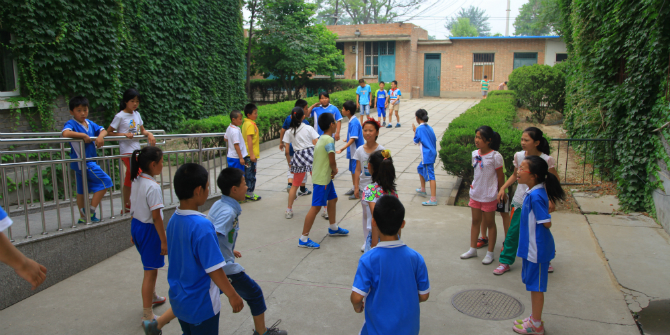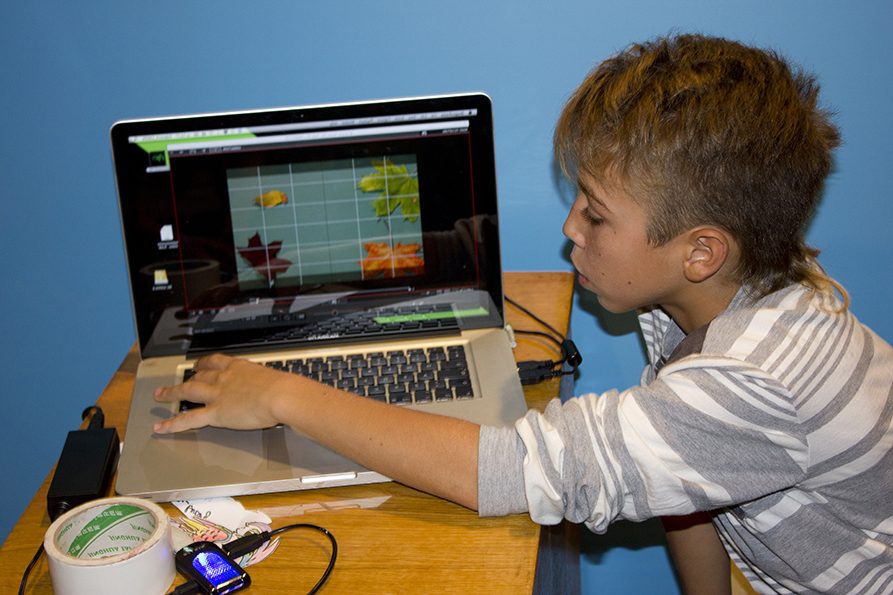 There are many concerns surrounding young people’s sexual communication online (or sexting), most of them coming from a protectionist position. Some concerns relate to the appropriateness of sexual communication for minors, others stemming from worries about privacy risks. But what is the actual extent of the risks and does sexting lead to harm for children and young people? For www.parenting.digital, Monica Barbovschi discusses the Norwegian findings from the EU Kids Online project (2017-19) offering insights into the way children’s practices of sexting have changed over the past decade and how individual and social factors can act as protective or risk factors for children’s exposure to unwanted sexual communication. Why are children with better digital skills at a higher risk of experiencing unwanted sexual communication? Can a positive family and school environment protect children?
There are many concerns surrounding young people’s sexual communication online (or sexting), most of them coming from a protectionist position. Some concerns relate to the appropriateness of sexual communication for minors, others stemming from worries about privacy risks. But what is the actual extent of the risks and does sexting lead to harm for children and young people? For www.parenting.digital, Monica Barbovschi discusses the Norwegian findings from the EU Kids Online project (2017-19) offering insights into the way children’s practices of sexting have changed over the past decade and how individual and social factors can act as protective or risk factors for children’s exposure to unwanted sexual communication. Why are children with better digital skills at a higher risk of experiencing unwanted sexual communication? Can a positive family and school environment protect children?
Norwegian adolescents’ sexual communication online
- The number of younger children (aged 11-12 years) who engage in sexual communication has not changed over the past decade: although the overall percentage of children (11 to 17 years) who receive sexual messages has increased (32% compared to 20% in 2010), the percentage of younger children who engage in sexting remained the same (7%).
- A quarter of children (11 to 17 years) who received sexual messages were upset about it, but one third were happy to receive them (and half of the boys). As expected, girls of all ages were more likely to be upset about receiving such messages while boys were more likely to be either neutral or happy about the experience.
A great deal of the online communication of sexual nature between adolescents was of consensual nature and part of their exploration and sexual development. However, around one quarter were asked to send sexual information about themselves when they did not want to do this. This type of problematic non-consensual requests can include pressure from within existing romantic relationships but also peer pressure from their wider social circle, as reported by a qualitative study of the European Institute of Gender Equality:
Oh, we’re doing this, why aren’t you doing it? sort of thing – boy, 17 years
Protective and risk factors
Digital skills alone (e.g. knowing how to block someone or how to report unwanted content) do not have a protective effect against unwanted sexual communication for children younger than 16 years. In fact, those with higher skills experience more unwanted sexual communication than those with lower digital skills. This might be because they lack other skills, such as interpersonal boundary setting, but also because, as previous EU Kids Online research showed, those who use the internet more (and thus have more digital skills), also encounter more risks.
- Parental enabling mediation (e.g. parents talking with their children about things they see on the internet or talking to them about what is safe) has a protective effect. However, this effect is modest and ceases after the age of 14. This might be because at this age children become more independent from their parents and develop their own identities. However, at this age peers also begin to matter more and to have an increasing, but not necessarily positive, influence, while effective boundary settings and emotional intelligence (e.g. recognising signs of coercion and manipulation) are not yet developed.
- Family and school environment matter as well, with those experiencing less support (by young people’s own account) experiencing more unwanted sexual requests. Family and school environment were calculated as scores of children’s subjective evaluations of their home and school climate.[1] Also, children who find it difficult to talk to their parents or carers about things that upset them are more likely to be asked for sexual information online when they do not want this. This indicates that supportive environment – at home and at school, with trusted adults children can talk to and helpful peers reduce the risk of unpleasant experiences online.
- Experiencing online aggression has the most significant impact on adolescents experiencing unwanted sexual communication, indicating a pattern of vulnerability which migrates across different risks online. Children were asked if they had been treated in a hurtful or nasty way during the past year, whether this happened on/offline and how often. Children who experience more peer aggression online, tend to be also those who experience unwanted sexual requests.
- When it comes to gender differences, girls experience more protective effects than boys. For example, more positive family and school environments reduce the odds of girls experiencing unwanted sexual requests (while only a positive family environment has a protective effect for boys). Moreover, there is a protective effect of digital skills (but only for older girls): girls aged 16 years or older who have better digital skills tend to experience fewer unwanted requests. This is probably also because they know how to create privacy boundaries (e.g. how to avoid unsuitable contact). This warrants a more complex discussion about the lack of support for boys dealing with unwanted sexual requests since the stereotype is that only girls receive such messages.
How to support children?
Around 25% of children in our research said they needed advice about sharing sexually explicit or nude images online in the past year. This is just one indicator that there are not enough spaces where young people can engage safely in conversations about their experiences with sexual communication online, about consent and personal boundaries in their relationships, online and offline. In addition to safer spaces for dialogue, we need to recognise young people’s agency and that they might engage in viewing sexual content and sending sexual messages voluntarily. Restrictive and prohibitive approaches do not foster honest communication and leave unaddressed problems like coercion and abuse.
As predicated by Sameer Hinduja, it’s 2020 and we need to start teaching safe(r) sexting, as part of a comprehensive sexual and relationship education curricula for young people, in correspondence with their developmental needs. Alongside issues related to online safety, such curricula should address toxic peer cultures which perpetuate bullying and victimisation, while encouraging emotional intelligence and healthy relationship boundaries among adolescents.
Notes on the report
This report was based on secondary analyses of the Norwegian dataset from the EU Kids Online 2017-2019 study. The Norwegian EU Kids Online survey (2018) was undertaken by Professor Elisabeth Staksrud at the Department of Media and Communication at the University of Oslo in collaboration with Ipsos Norway, who collected the data. The report presents findings on Norwegian adolescents’ experiences of sexting, including sending and receiving sexual messages, and how they felts about these experiences. The study involved 1001 children aged 9 to 17 (only adolescents 11 to 17 were asked questions about sexual messages, n=790). The data collection was funded from the Norwegian National State Budget 2017-2018 under the Ministry of Justice and Public Security’s Proposition 1S (2016-2017) and Proposition 12 S (2016-1017) Escalation Plan against Violence and Abuse (2017-2021).
[1] The items were ‘How true are the following things about your family and home?’: ‘When I speak someone listens to what I say’, ‘My family really tries to help me’, ‘I feel safe at home’. ‘Please say how much you agree or disagree with each statement’: ‘I feel like I belong in my school’, ‘I feel safe at school’, ‘Other students are kind and helpful’, ‘Teachers care about me as a person’, ‘There is at least one teacher I can go to if I have a problem’.
First published at www.parenting.digital, this post gives the views of the authors and does not represent the position of the LSE Parenting for a Digital Future blog, nor of the London School of Economics and Political Science.
You are free to republish the text of this article under Creative Commons licence crediting www.parenting.digital and the author of the piece. Please note that images are not included in this blanket licence.
Featured image: photo by Andrea Piacquadio on Pexels





